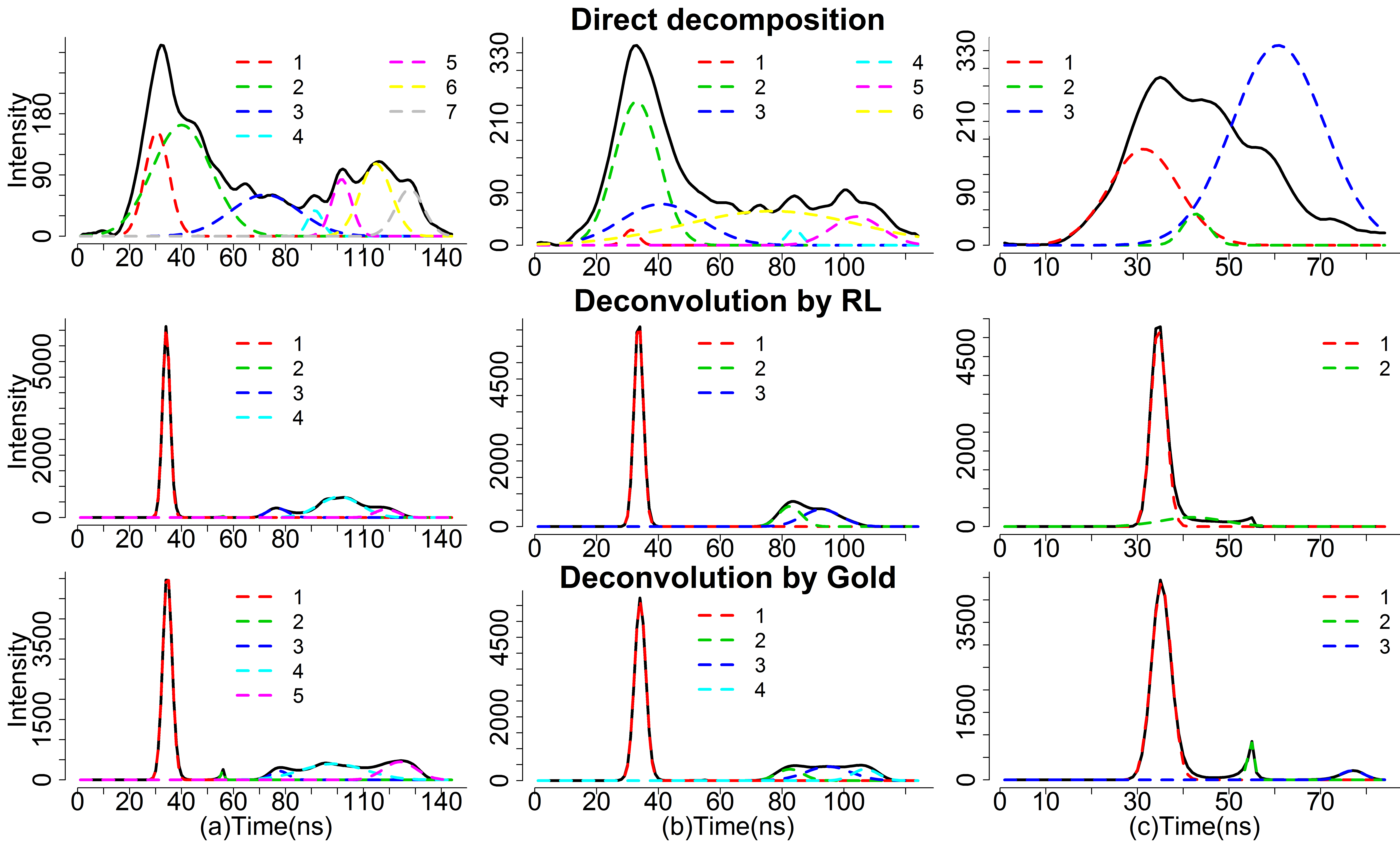waveform decomposition vs. deconvolution

Goal:
Make waveform lidar processing become easier and enable users can use exisitng Discrete-return lidar data processing tools.
Introduction:
Waveform Light Detection and Ranging (LiDAR) data have advantages over discrete-return LiDAR data in accurately characterizing vegetation structure. However, we lack a comprehensive understanding of waveform data processing approaches under different topography and vegetation conditions. The objective of this paper is to highlight a novel deconvolution algorithm, the Gold algorithm, for processing waveform LiDAR data with optimal deconvolution parameters. Further, we present a comparative study of waveform processing methods to provide insight into selecting an approach for a given combination of vegetation and terrain characteristics. We employed two waveform processing methods: (1) direct decomposition, (2) deconvolution and decomposition. In method two, we utilized two deconvolution algorithms – the Richardson-Lucy (RL) algorithm and the Gold algorithm. The comprehensive and quantitative comparisons were conducted in terms of the number of detected echoes, position accuracy, the bias of the end products (such as digital terrain model (DTM) and canopy height model (CHM)) from the corresponding reference data, along with parameter uncertainty for these end products obtained from different methods. This study was conducted at three study sites that include diverse ecological regions, vegetation and elevation gradients. Results demonstrate that two deconvolution algorithms are sensitive to the pre-processing steps of input data. The deconvolution and decomposition method is more capable of detecting hidden echoes with a lower false echo detection rate, especially for the Gold algorithm. Compared to the reference data, all approaches generate satisfactory accuracy assessment results with small mean spatial difference (<1.22 m for DTMs, <0.77 m for CHMs) and root mean square error (RMSE) (<1.26 m for DTMs, <1.93 m for CHMs). More specifically, the Gold algorithm is superior to others with smaller root mean square error (RMSE) (<1.01 m), while the direct decomposition approach works better in terms of the percentage of spatial difference within 0.5 and 1 m. The parameter uncertainty analysis demonstrates that the Gold algorithm outperforms other approaches in dense vegetation areas, with the smallest RMSE, and the RL algorithm performs better in sparse vegetation areas in terms of RMSE. Additionally, the high level of uncertainty occurs more on areas with high slope and high vegetation. This study provides an alternative and innovative approach for waveform processing that will benefit high fidelity processing of waveform LiDAR data to characterize vegetation structures.
Project link: https://github.com/tankwin08/waveformlidar/tree/master/vignettes